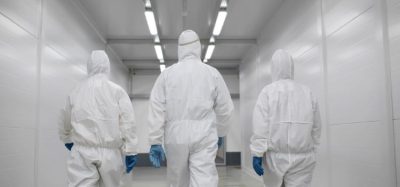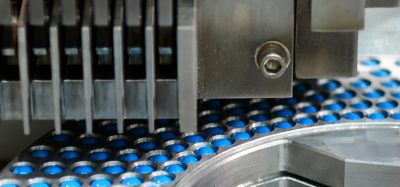Microbiology / Microbiologists – Where next?
Posted: 23 January 2008 | | No comments yet
Arguably microbiology is the oldest of the applied sciences, although early exponents doubtless had no understanding of how the fruits of their labour in fermentation for example, came about. The true forerunners of microbiology as it is recognised today would be Koch, Pasteur, Petri et al, who developed much of our basic understanding of the subject and many of the methods that are still in use approximately 150 years later. In that intervening period our knowledge of human and microbial genetics has dramatically increased and our exploitation of that knowledge has led to the current explosive growth of Biotechnology, such that clinically important biopharmaceuticals can now be produced by insect, plant, bacterial or mammalian cell lines or indeed in the milk of bovines.
But what of microbiology and microbiologists? If Pasteur or Koch were to return today, other than GCLP (Good Control Laboratory Practice) requirements which would be alien to them, they would still recognise the techniques being used to identify and enumerate micro-organisms in many pharmaceutical microbiological laboratories. Whilst there will probably always be a place for these traditional methods, microbiology/microbiologists must adapt to the changes in the industry. After all, in the space of 50 years or so, their chemistry colleagues have moved from thin layer chromatography and large hand packed column chromatography, to totally automated high pressure liquid chromatography and from calculating relative peak areas, by cutting out and weighing the graph paper to computerised integration!
Challenges
Rapid Methods
The first challenge is for microbiology to firmly embrace the new techniques available for both the automatic identification and enumeration of microorganisms. It is not intended to detail in this article the technologies available, the reader is referred to the references on the topic1-4 which cover this in some detail. However, this is an area where microbiologists need to take a lead role.
Many pharmaceutical companies are still not utilising rapid methods (RMMs) despite the considerable savings in time they offer and in many cases, increases in enumeration accuracy. It is not clear to the author why after nearly 20 plus years of availability of the technology, this is still the case, but reasons given include:
- The regulatory authorities do not support their use – not true. The MHRA are on record with their support for RMMs and are disappointed at the slow uptake. The EMEA have also ensured that assessors are knowledgeable regarding the techniques, removing one of the barriers to marketing authorisation (MA) approval.
- The old methods are fine; we do not need to adopt new technology – not true. The MA holder has a clear duty to adopt advances in analytical and manufacturing technique. EC commission regulation 658/2007, which came into effect in June 2007, states in Article 1, potential circumstances in which a financial penalty might be levied on the MA holder and one of these includes failure to take into account technical and scientific progress.
- If we automate enumeration/identification, the company will not need a trained microbiologist – not true. This did not happen to chemists upon the introduction of automation and the results will still need to be interpreted. Arguably the adoption of these methods will give microbiologists more time to spend actually in the manufacturing areas proactively preventing problems.
- Our regulatory affairs group does not want to amend the MA – possibly true. But here again the microbiologist must take the lead in explaining the techniques, their benefits in cycle time reduction and so forth, so that RA group appreciate the need for introduction.
Risk Management
The second challenge is in the area of risk management. This approach to quality, identified for example in ICH 9 Quality Risk Management (2006), is certainly attracting the attention of the industry and regulatory authorities worldwide. Both the FDA and the EMEA are proposing to carry out inspections on a risk based approach and the MHRA has recently published a document detailing its approach to risk based inspections (MLX345 – MHRA consultation on a risk based inspection programme for good practice inspections – www.mhra.gov.uk). Many commercial organisations are treating risk assessment/risk management as a recently discovered discipline! Most microbiologists who are used to dealing with an “enemy” they cannot see, who may be difficult or impossible to detect, who may exist fleetingly but when they do can create havoc, have lived and breathed risk assessments. Whenever an environmental monitoring limit has been broached, or when a total viable count has been exceeded, or when a sterility test has failed, the impact on the patient has to be ascertained and the likelihood of that risk being widespread has to be determined or often “guesstimated”. Microbiologists have a key responsibility in these cases to lead the evaluation and document the rationale and in so doing, support the decision making of the qualified person, particularly if they are a Chemist or Pharmacist, who may be used to dealing with situations where the analysis is more certain.
New Technology
The third challenge is for microbiologists to champion the introduction of new technology in manufacturing of sterile products, particularly those using aseptic filtration. Many of the new products resulting from biotechnology over the last 20 years have been sterile injections. In the main, these are protein based or protein/carbohydrate based and so the use of heat (moist or dry) or irradiation (gamma or e beam), is precluded due to damage inflicted on the molecular structure which is inherent to the biological activity. Industry watchers are predicting the long hoped for boom in biopharmaceuticals as our understanding of disease at the molecular level increases and our ability to manipulate cell lines improves. The potential for stem cell therapy is only just being realised. What is for certain is that until delivery systems are invented which allow such products to survive in the gastro intestinal tract and means are found to migrate from there to the target site, most such products will be aseptically produced. The major drawback of aseptic manufacture is the presence of humans who are the single most potent source of mico-organisms in a well designed clean room. To mitigate this risk restricted barrier, access systems (RABS) can be used or for a more complete separation, isolator technology can be deployed. However, in many cases established clean rooms are of conventional design and retrofitting RABS or introducing isolators may not be feasible. Where compatibility can be shown (which in the case of protein based therapeutics is very limited), then blow-fill-seal (BFS) technology can be used, although again retrodeployment may be very difficult.
There are however other emerging technologies which can be retrofitted and reduce the risk. For example, products that are lyophilised are effectively exposed to the clean room environment as the stoppers can only be partially seated to allow vapour escape during sublimation. A recent innovation is a shrouded cap (Lyoseal – www.biocarp.fr) which provides a very tortuous path for microbial contamination, effectively reducing the risk to zero. For conventional liquid filled vials, the risk area, albeit small, is the point at which the vials are filled and remain exposed prior to stoppering. This risk maybe increased during interventions which may lead to significant product loss as vials in the area may need to be discarded. A system whereby the vial is presented to the filling head already stoppered and terminally sterilised has now been developed, which uses a filling needle that perforates the stopper which is then immediately sealed with a laser, so there is no product exposure (Aseptic Technologies – Belgium).
Other systems for making aseptic connections between process stages, such that there is no exposure of the sterile pathway to the environment/operator, are available. These work by protecting the male and female connectors with a film which is removed after locking the two halves and in such a way that the sterile channel between the two is never exposed (Kleenpak – Pal Corporation).
The role of the microbiologist for this challenge is to provide technical input, risk assessments, data and opinion, to support investment in these systems, all of which reduce the risk to the patient. They should also proactively identify opportunities for improvement of sterile area practice in their own units and work with suppliers to find resolutions. They need to ensure that development personnel are aware of these opportunities and can build them into the early stages of product development, thereby generating the data using new systems for the regulatory filings.
New Manufacturing Process
The final challenge will be those presented by the exploitation of new manufacturing technologies, particular in the biotechnology field. As mentioned above, genetic manipulation of cell lines both microbial and mammalian, is likely to be the source of many new biopharmaceuticals. Other less common sources will be insect cells and most recently Canadian Pond Weed. In all cases, various bioreactor systems will be used; either conventional fermentors or the newer generation of disposable bioreactors (Wave – www.wavebiotech.com). Whichever system is adopted, they all share in common the growth of the cell line in a media which also provides a potential substrate for contaminating organisms which maybe bacterial, fungal, viral or mycoplasma. The downstream processing is often complex and involves equipment which may be used multiple times and poses sterilisation/sanitisation challenges for example, diafilters. The scale and complexity, plus the development costs to bring a new biopharmaceutical from conception to marketing, are such that a single bioreactor may contain potentially millions of pounds worth of product. This is the background in which many microbiologists will work in the future and their role is clearly to protect this investment. They should be located in the manufacturing area and be working closely with operational personnel, particularly when problems occur or when a process deviation occurs. This will ensure that from a microbial perspective all possible steps are taken to minimise potential contamination which will either condemn the batch from a sterility perspective, or contaminate it chemically due to the unwanted activity of the contaminant (for example, endotoxin).
Conclusion
From a starting point of concern regarding the slow progress of the science, the next decade offers huge challenges to microbiology and the microbiologist. This process will remain firmly based on traditional microbiological knowledge, but will also require adoption of a whole new range of skills: it will require microbiologists to leave the laboratory or take it with them, provide the potential for a “laboratory on a chip” to both identify and possibly enumerate micro-organisms, which may well be within this timescale and also enable microbiologists to become process experts, so that they can identify opportunities for adventitious contamination and propose resolutions and to actively seek applications for the new technologies that will be introduced in this time period.
References
- Johnson, R. (2007). A “PAT” on the Back for Rapid Microbiological Methods. European Pharmaceutical Review. Issue 4, 84 – 88pp
- (Newley, P. et al (2004). The Introduction of Qualitative Rapid Microbiological Methods for Drug-Product Testing. Pharm Technol. PAT Issue 6 – 12pp
- Parenteral Drug Association (2000) Technical Report 33, Evaluation, Validation and Implementation of New Microbiological Testing Methods. J. Pharm.Sci Technol. 54 (3) Suppl. TR33
- Kricka, L.J. (2003) New Technologies for Microbiological Assays in Rapid Microbiological Methods in the Pharmaceutical Industry, ed. M. C. Easter. Interpharm/CRC press, 233-248pp
Stewart Green
Director of Quality, Wyeth, UK and Chair, Pharmig
Stewart Green is Chair of Pharmig, a non profit making organisation dedicated to microbiologists in the Health Care Sector. He is also currently the Director of Quality for Wyeth UK. Stewart has enjoyed a long career in the Industry over a period of over 40 years, during which he has occupied increasingly senior positions in Quality Control, Validation, Production, Logistics and Quality Assurance. A microbiologist by profession he also has a Masters in Strategic Quality Management. He is a recognised expert in sterile area practice.









